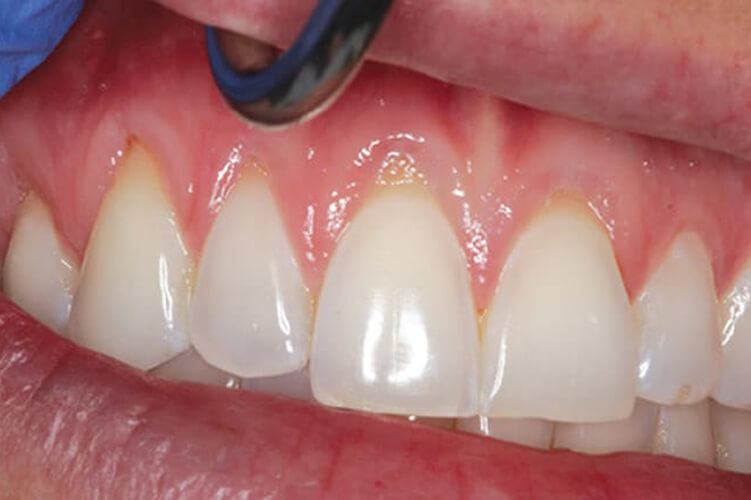Dental Recession is a common treatable condition often seen at St. Lawrence Dentistry.
In health, the gum (gingival) margin typically extends about 1mm above the “cementoenamel junction” or “CEJ”. It is a slightly visible anatomical border identified on a tooth. The CEJ is where the enamel, which covers the anatomical crown of a tooth, and the cementum, which covers the anatomical root of a tooth, meet.
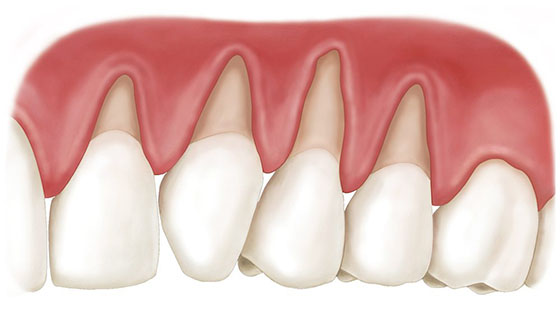
Gum recession is the shift of the gum below the CEJ toward the tooth’s root. By definition, recession results in exposure to the tooth’s cementum portion. Cementum is a specialized calcified substance covering the root of a tooth. The cementum is part of a tooth that attaches to the surrounding bone by a periodontal ligament.
Recession usually occurs in people older than 30 on the front aspect of teeth; it occurs less frequently on the back of teeth and in between teeth. Recession may be localized or generalized and often happens during inflammation in combination with bad habits (improper tooth brushing technique, fingernail injuries). It appears more on teeth that have fragile gum tissue.
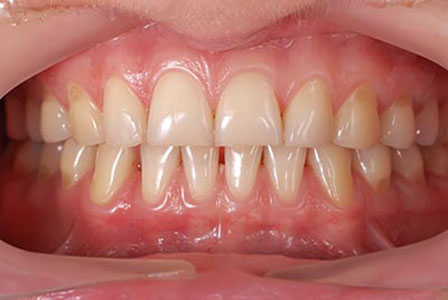
Localized causes include excessive grinding pressure, poorly fitting dental crowns, plaque, and calculus. Plaque is bacteria and its matrix that adheres to the outer tooth surface. Calculus consists primarily of mineralized, dead bacteria with a small amount of mineralized salivary proteins.
To learn about the cleaning process to rid the teeth and gums of calculus and plaque, please visit us here:
Gum recession can lead to molar teeth having furcation bone loss. To learn more about this vital topic, please visit us at:
Gum recession begins as a minor oval defect but may progress to expose the entire root. St. Lawrence Dentistry offers “gum” grafting or augmentation procedures to treat dental recession. The goal is to thicken the gum and cover the tooth’s root with new gum tissue. Dr. Hawryluk may suggest this procedure if the recession is progressive, the patient is experiencing sensitivity from the root surfaces, or if esthetics are a concern.
To learn more about gum grafting procedures offered by St. Lawrence Dentistry, please visit us here:
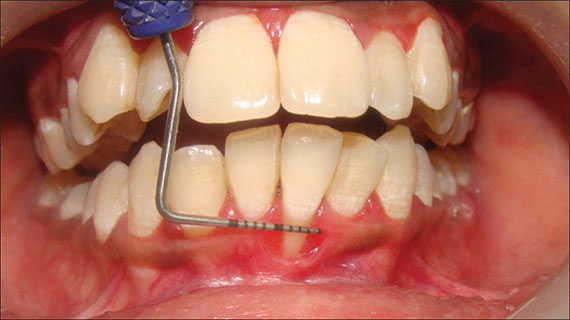
The most widely accepted classification of dental recession is the Miller system. Dr. Hawryluk will diagnose what recession category your teeth have. The key to understanding the classification system is to be familiar with the term mucogingival junction. It is an anatomical feature found on the intraoral mucosa. The mucosa of the cheeks and floor of the mouth are freely moveable and fragile, whereas the mucosa around the teeth and on the palate is firm and keratinized. Where the two tissue types meet is known as a mucogingival junction.
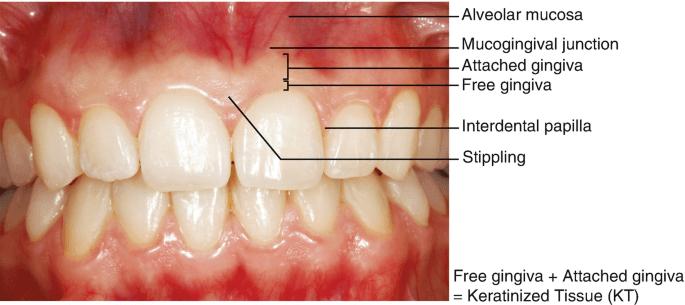
The “Miller classes” are as follows:
- Class 1: Recession that does not extend to the mucogingival junction with no bone loss. You can maintain this recession class with proper brushing/flossing techniques and visits with the dental hygienist.
- Class 2: Recession that extends to or beyond the mucogingival junction, with no interdental bone loss. Dental grafting can regain all or almost all of the original gum.
- Class 3: Recession that extends to or beyond the mucogingival junction, with some periodontal bone loss. Dental grafting can usually regain some of the lost gum, but it is sometimes not as successful as treating in a class II situation.
- Class 4: Recession that extends to or beyond the mucogingival junction, with severe bone and/or soft-tissue loss in the interdental area and/or severe malpositioning of the teeth. Grafting can thicken the remaining gum, but regaining lost gum is not expected in this class.
If you have a dental recession and want to investigate treatment options further, please call St. Lawrence Dentistry.
- St. Lawrence Dentistry Looks Forward To St. Patrick’s Day! - March 12, 2025
- Understanding Dental X-Rays and Radiation: What You Should Know - January 13, 2025
- Happy New Year from St. Lawrence Dentistry! - December 30, 2024



